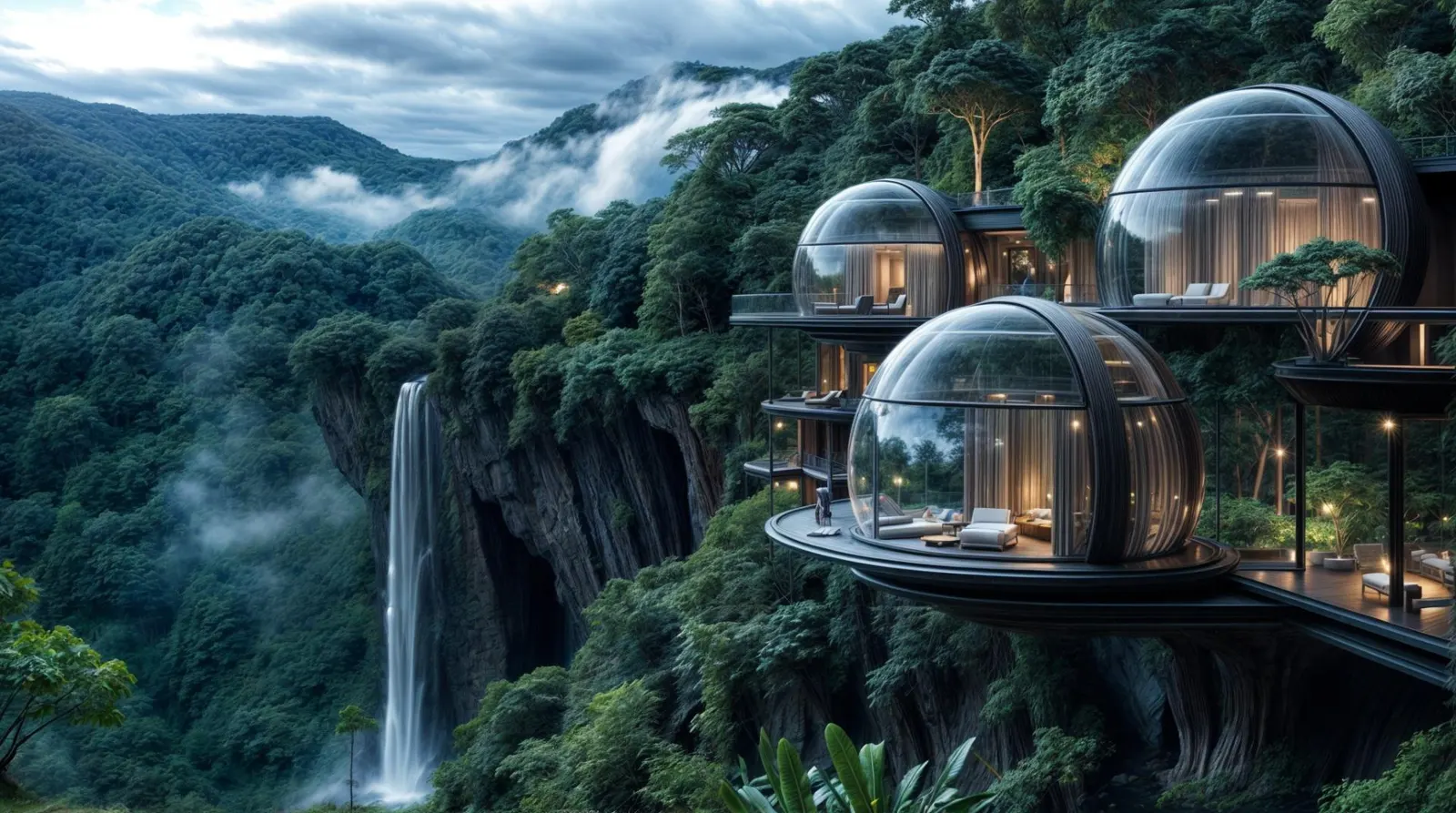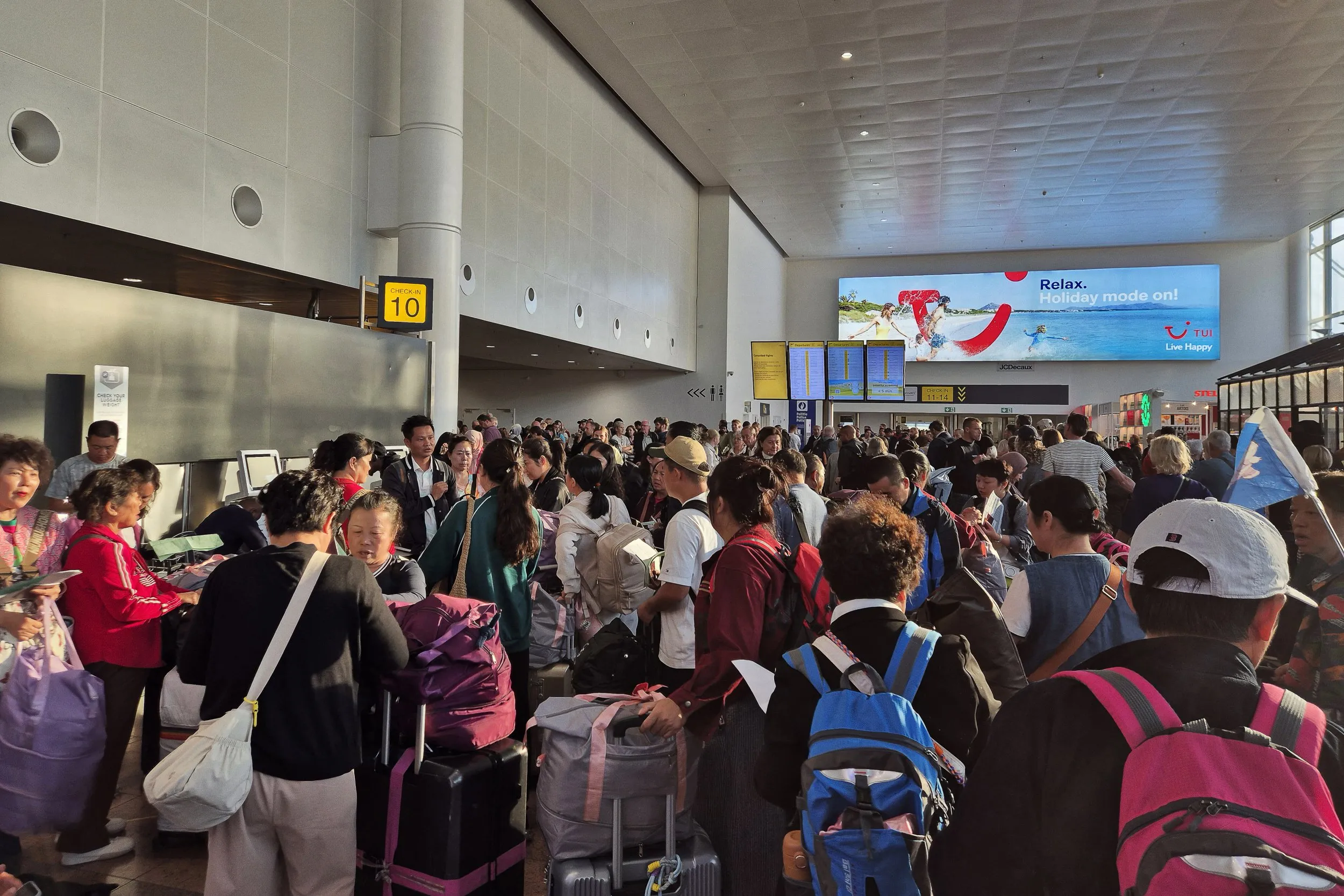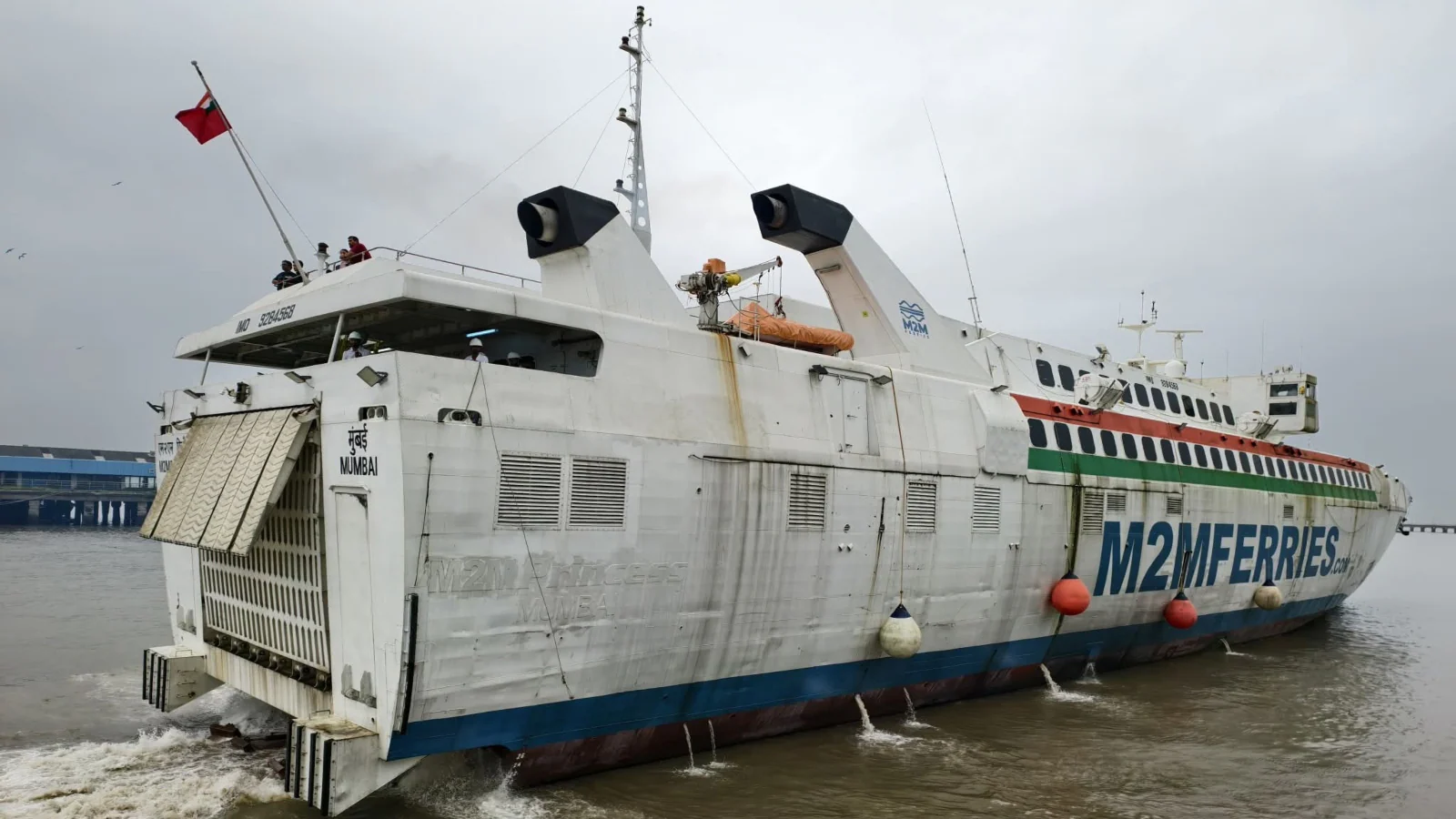By Ia Interior Architects,Jim Dobson,Senior Contributor
Copyright forbes

NIMA glass pod hotel in the Lacandon Jungle
Universidad Anáhuac México
Every year, I am reminded how far hotels have evolved, no longer just places to sleep, but transforming the typical stay into outrageous sensory experiences once only imagined in science fiction movies. It is exciting to see what the future holds, with these stunning new hotel designs being launched in remote destinations that were previously impossible, and how they are set to shape the future of the hospitality industry.
From minimalist to extreme luxury, from wellness-focused and futuristic smart rooms, designers are adopting new technologies and strategies to enhance the guest experience.
Radical Innovation is a nonprofit platform that has become a launchpad for some of the most impressive designs in travel and hospitality. Founded in 2006, the nonprofit elevates unique ideas for the future of hospitality and travel. Through their annual global awards competition open to professionals and students across design, architecture, and product development, Radical Innovation recognizes excellence. It connects creators with developers and investors to bring these concepts to life.
Now in its 19th year, the Radical Innovation jury selected the finalists below based on their creativity and inspirational design, as well as how their project would impact the industry. Winners will be announced at an awards ceremony later this Fall.
Selected from more than 100 submissions across four categories, including Professional Project, Student Project, Professional Product, and Student Product, here is a first look at the bold new ideas, hoping to inspire the future of travel.
The Passage is an innovative reuse project that transforms abandoned railway bridges into hotels
IA Interior Architects
Abandoned Railway Bridges Become Hotels
THE PASSAGE is a project that was created to transform abandoned railway bridges into hospitality destinations, reducing the need for new construction. Featuring cantilevered guest pods, skywalks, and rooftop gardens, the design celebrates original trusses while operating as a closed-loop system powered by solar, wind, and rainwater. According to designers James Lee, Levi Lu, and Theresa Lee, the project is “Adaptable to diverse sites and offers a first-of-its-kind experience that combines sustainability, architectural heritage, and a deep connection to nature.”
(Designed by IA Interior Architects / Nominated for Best Professional Project)
Biodegradable tented resort
Luxury Frontiers
The Biodegradable Tented Resort
GROWN is a project is a reimagining of tented architecture that begins with materials, replacing petroleum-based canvas and steel with regenerative, biodegradable components. According to designer Graeme Laebe, “The structure uses mycelium panels grown from agricultural waste, sealed with beeswax, and paired with a bamboo framework, creating a modular system that is naturally insulating, fully compostable, and adaptable. When panels biodegrade, they return to the earth and are replaced without contributing to landfill, allowing the architecture to renew itself over time.”
(Designed by Luxury Frontiers / Nominated for Best Professional Project)
NIMA glass pod resort
Eugenio Benavides Diaz
A Rotating Glass Pod Resort
Perched on a cliff above the Lacandon jungle, NIMA redefines luxury hospitality by merging sustainability and cultural authenticity with immersive design. The elevated glass pods provide 360-degree views of the rainforest while rotating with the sun for climate control. The integrated solar panels, water-cooling systems, and minimal-impact engineering ensure regenerative living. According to designer Eugenio Benavides Diaz, “By partnering with local Lacandon communities, NIMA offers wellness rituals, foraged cuisine, and cultural programming—creating an experience that is both futuristic and deeply rooted in nature.”
(Universidad Anáhuac México / Nominated for Best Student Project)
Duna Sagra project featuring resort built entirely into the sandy dunes
nstituto Tecnológico y de Estudios Superiores de Monterrey Campus Toluca
A Subterranean Hotel Embedded In Dunes
DUNA SAGRA is a hospitality concept that embeds itself within the dunes of San Nicolás, Sonora, Mexico. Crowned by a 115-foot dome that provides ventilation, water collection, solar power, and light, Duna Sagra extends outward into an amphitheater, a market pier, and semi-buried guest modules connected by subterranean lounges and pathways. According to designers Sara Osorio Alanis, Blanca Paola Colin Reyes, Gabriel San Roman Rodriguez, and Alan Ignacio Ortuño, “Duna Sagra transcends the common trope of a luxury escape by offering a deeper, more sensorially rich proposition: guests don’t merely visit the desert—they become part of its story.”
(Instituto Tecnológico y de Estudios Superiores de Monterrey Campus Toluca/ Nominated for Best Student Project)
BBBL3 from HKS & ROAM Interior Design
Winners last year included The BBBL3, offering a fully immersive, multi-sensory experience that can be privately booked. The bubbles embody wellness and customization, complemented by technology integration. Cutting-edge AI and smart technology enable explorers to input their desired environment, matching their preferences whether dining or exploring new destinations or surroundings.
Cielo Colca Hotel
Instituto Tecnológico y de Estudios Superiores de Monterrey Campus Toluca
Cielo Colca Hotel redefines how people experience hospitality in extreme natural environments and also sets a new standard for sustainability and environmental respect. The hotel’s immersive, floating architecture seamlessly blends into the canyon landscape, with half of the structure rooted in the canyon surface for stability and connection to the earth. In contrast, the other half extends outward, suspended above the canyon void, offering guests the sensation of “walking on air” and unparalleled panoramic views.
Committed to preserving the local ecosystem, the property incorporates renewable energy and water recycling systems, while also supporting the local community by hiring artisans and workers to promote employment and strengthen the regional economy. This combination of visionary architecture, ecological commitment, and cultural connection makes Cielo Colca a unique jewel in the global hotel landscape.
MORE FROM FORBES
ForbesInside The Futuristic Shebara Resort In Saudi Arabia With Mirrored Overwater VillasBy Jim Dobson
new hotel designs
Editorial StandardsReprints & Permissions



